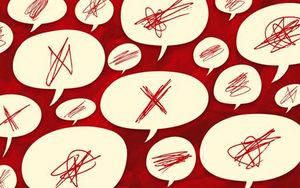New York City is gearing up for the launch of its highly anticipated congestion pricing program, set to commence on January 5, 2025. This initiative, which will charge drivers entering Manhattan below 60th Street, aims to tackle the dual problems of gridlock and air pollution, all the enquanto generating significant revenue for the city's transportation infrastructure.
The congestion pricing plan is the first of its kind in the United States, with authorities aiming to collect nearly $15 billion over the years to fund subway improvements and other public transport projects. Starting with a daytime toll of $9, this fee will apply to passenger vehicles and small commercial trucks during peak hours. The tolls will operate from 5 AM to 9 PM on weekdays and 9 AM to 9 PM on weekends, though non-commercial vehicles will only incur a $2.25 charge during overnight hours.
Over recent months, these plans have been met with both enthusiasm and discontent among New Yorkers. A Siena College poll highlighted the divide, with approximately 56% of New York City residents and 60% of suburban dwellers opposing the pricing scheme, leading some critics to label it as detrimental to the working middle class. Meanwhile, proponents argue it is necessary for maintaining and enhancing the public transport system.
Governor Kathy Hochul recently took to the Garrison Metro-North station to celebrate $3 million worth of renovations aimed at enhancing commuter experience, presenting it as evidence of the benefits the congestion pricing program will bring to suburban commuters. She stated, "That region cannot function at the level it should if we do not have a high-functioning, well-financed, supported infrastructure system for public transportation." This remark was made during her ride from Garrison to Manhattan, underscoring her commitment to the new pricing strategy.
But Hochul's message was not without conflict; her visit coincided with criticism from local lawmakers who are staunch opponents of the congestion pricing initiative, including Congressman Mike Lawler. Lawler's district covers the region where Hochul delivered her remarks and he has denounced the plan as financially burdensome. Despite the backlash, Hochul urged for support, highlighting the importance of the Metropolitan Transportation Authority (MTA) as the backbone for both the city and surrounding areas.
The MTA has projected significant funds to be generated through the program, which will be funneled back to various capital projects, improving not just subway systems but also enhancing the infrastructure necessary to fight climate change threats, such as rising sea levels. "Failure is not an option," Hochul emphasized, portraying the congestion pricing plan as imperative for the region's mobility and economic health.
Despite previous pauses and reconsideration of toll fees—Hochul initially deemed the earlier proposed $15 charge too harsh for workers—her current advocacy for the $9 fee marks a strategic pivot. This fee is slated to escalate over the next several years, reaching $12 by 2028 and $15 by 2031.
And as specifics about the congestion relief zone take shape, questions about alternate routes arise. With the cashless tolling system implemented, commuters will be notified of fees either through mail or via their E-ZPass, leading many travelers to speculate on how best to navigate the pricing grid. Popular navigation apps like Waze and Google Maps typically offer alternatives to avoid toll roads; yet within the congested city setup, users may find it challenging to circumvent charges without extending travel time.
That said, some routes like the FDR Drive and Route 9A will remain exempt from these new charges, providing commuters with options. Those residents living within the congestion zone who earn less than $60,000 annually may also qualify for tax credits.
Government officials, meanwhile, continue to voice plans to crack down on illegal license plates, enforcement being ramped up as the launch date approaches. The NYPD and sanitation department shared details of their combined efforts to reduce the number of vehicles avoiding tolls by using counterfeit plates. This initiative, which has already seen approximately 5,000 illegal vehicles seized, serves as additional preparation for the congestion pricing introduction.
With the clock ticking down to January 5, the air buzzes with contending opinions, fervent discussions on social media, and community forums, reflecting the deep-seated cares surrounding the congestion pricing initiative. While Mayor Eric Adams emphasized the need for increased public transit investment, he still found himself on the receiving end of criticism for the tolling plan, with dissent brewing from local Democratic lawmakers.
The onus is now laid upon New Yorkers as they prepare for this transformative step toward regulating traffic and fostering more sustainable urban development. Those affected by the toll have more than just their travel expenses to contemplate; they are also weighing opinions about the efficacy of the congestion pricing scheme against the backdrop of their daily commutes and the larger vision for public transportation development.
While opposition may simmer, Hochul and advocates remain steadfast, underscoring the urgency for significant structural changes within urban transportation. Many eyes will be on New York City to see how the congestion pricing model performs and what impacts will reverberate through the fabric of daily life it seeks to improve.



